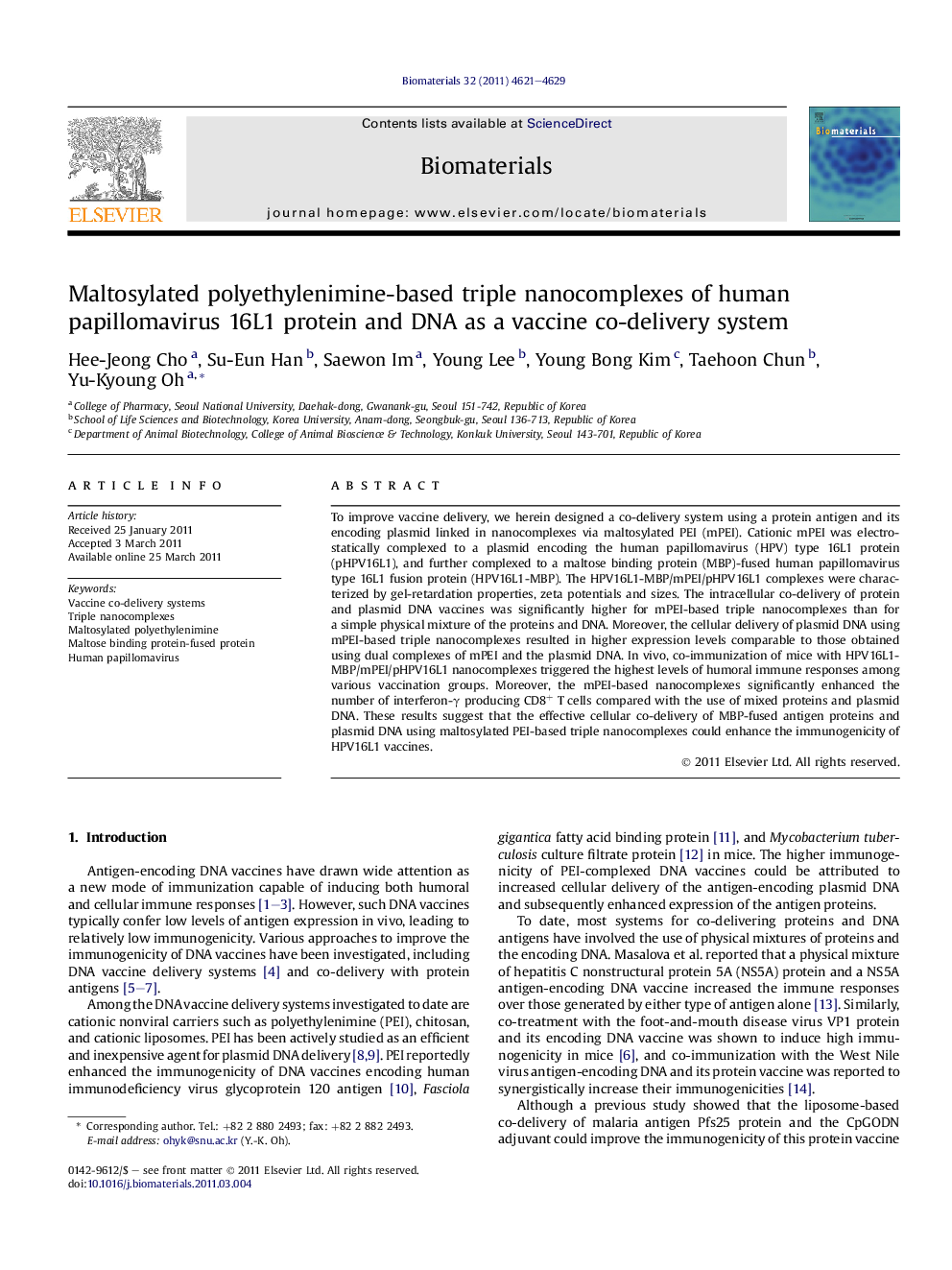| Article ID | Journal | Published Year | Pages | File Type |
|---|---|---|---|---|
| 7695 | Biomaterials | 2011 | 9 Pages |
To improve vaccine delivery, we herein designed a co-delivery system using a protein antigen and its encoding plasmid linked in nanocomplexes via maltosylated PEI (mPEI). Cationic mPEI was electrostatically complexed to a plasmid encoding the human papillomavirus (HPV) type 16L1 protein (pHPV16L1), and further complexed to a maltose binding protein (MBP)-fused human papillomavirus type 16L1 fusion protein (HPV16L1-MBP). The HPV16L1-MBP/mPEI/pHPV16L1 complexes were characterized by gel-retardation properties, zeta potentials and sizes. The intracellular co-delivery of protein and plasmid DNA vaccines was significantly higher for mPEI-based triple nanocomplexes than for a simple physical mixture of the proteins and DNA. Moreover, the cellular delivery of plasmid DNA using mPEI-based triple nanocomplexes resulted in higher expression levels comparable to those obtained using dual complexes of mPEI and the plasmid DNA. In vivo, co-immunization of mice with HPV16L1-MBP/mPEI/pHPV16L1 nanocomplexes triggered the highest levels of humoral immune responses among various vaccination groups. Moreover, the mPEI-based nanocomplexes significantly enhanced the number of interferon-γ producing CD8+ T cells compared with the use of mixed proteins and plasmid DNA. These results suggest that the effective cellular co-delivery of MBP-fused antigen proteins and plasmid DNA using maltosylated PEI-based triple nanocomplexes could enhance the immunogenicity of HPV16L1 vaccines.
